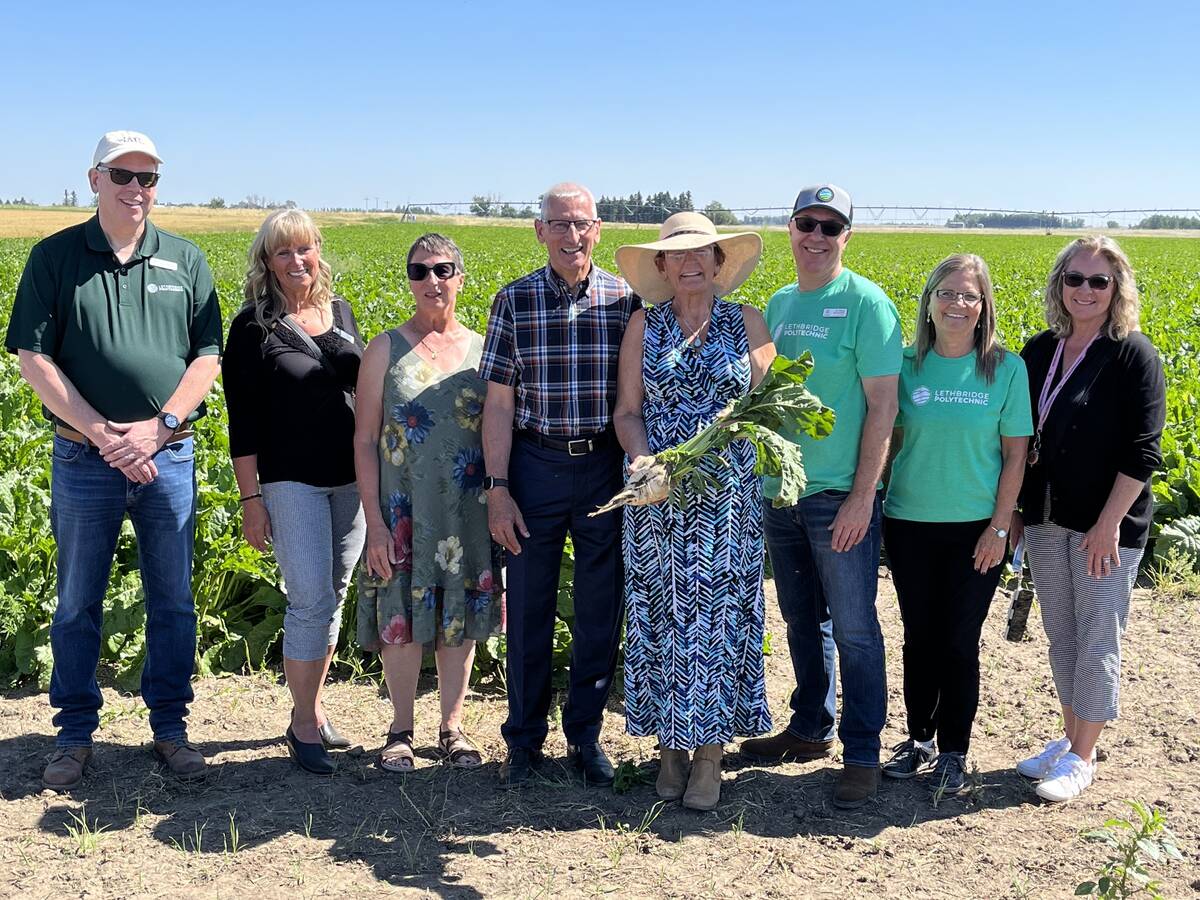Problems growing in the United States, but prairie pulse agronomist says it’s also a worry in Canada
SAN ANTONIO, Texas — Fungicide resistance could be the next big crop input challenge facing farmers, say experts.
“We’re not at the level of severity that we see currently with herbicide resistant weeds, but we are at the very beginning of it,” Carl Bradley, plant pathologist with the University of Kentucky, told reporters during a news conference at the 2017 Commodity Classic.
“So now really is the time to take action and inform people and educate people.”
The United Soybean Board launched its Take Action education program for herbicide resistant weeds at the same event three years ago. This year it expanded the program to include fungicide resistance.
Read Also

Lethbridge Polytechnic receives major donation
Multimillion-dollar donation by Hranac family aids Lethbridge Polytechnic’s research in integrated food production systems, irrigation science and post-harvest technology in Alberta
Gregg Fujan, a soy check-off farm leader from Nebraska, said farmers can’t cut corners if they want to stay ahead of fungicide resistance.
“If we lose the tools we have, there’s a financial risk of having diseases we can no longer control,” he said.
Fujan said farmers can take four steps to reduce the odds of fungicide resistance occurring in their fields.
They need to scout for diseases regularly, understand thresholds and when to apply fungicides, apply only when it makes economic sense and rotate modes of action.
“We learned some hard lessons about preserving technology when it comes to weeds,” he said.
“Now it’s time for history to stop repeating itself.”
Sherrilyn Phelps, agronomy manager for Saskatchewan Pulse Growers, said fungicide resistance is not just an issue south of the border.
“It is something that we are concerned with here in Canada as well and particularly in pulses,” she said.
Phelps is not aware of any cases where resistance has been identified, but that’s likely because nobody is testing for it.
She suspects there are cases of ascochyta blight resistance in chickpeas because growers are spraying the crop up to six times in wet and humid years.
Fungicides are not sprayed as often on pea and lentil crops, but it is not uncommon for growers to make two applications during wet seasons when prices are high and there is good yield potential.
Phelps agrees that it is time for growers to take action to help prevent resistance from becoming a big problem because they need fungicides to control diseases such as anthracnose, ascochyta, botrytis and scler-otinia.
If growers lost fungicides as a tool for controlling diseases, they would have to rely entirely on crop genetics, and if that breaks down, it would have huge financial implications.
“(Diseases) can come in and completely devastate a crop,” she said.
Phelps said growers should not spray just because their neigh-bours are doing it or because they normally do at that time of year. They need to know when the risk is prevalent and figure out whether it makes economic sense.
Bradley said fungicide resistance has been in North America since the 1980s, but it wasn’t found in soybeans until 2010 when the fungus that causes frogeye leaf spot showed resistance in Illinois, Kentucky and Tennessee. Resistance to that fungus is now in 12 states.
Resistance is mainly in the strobilurin class of fungicides in North America. More than 20 different fungal species have developed resistance to that class of chemistry.
In Europe it can be found in the triazole class of fungicides used on small grains. However, the risk of resistance to triazoles is medium compared to high for strobilurins.
Phelps said strobilurin-based fungicides are used extensively on pulse crops, although there are new products on the market that use other modes of action.
She said one of the problems with fungicide resistance is going to be that it is harder to test for and detect than herbicide tolerance.
“With herbicide resistant weeds, you see the weed,” she said.

















